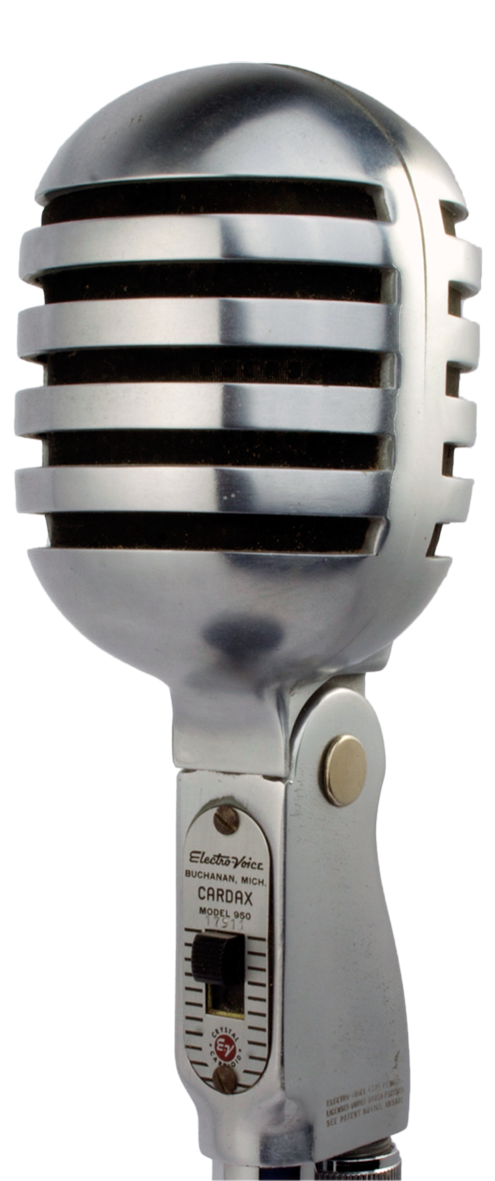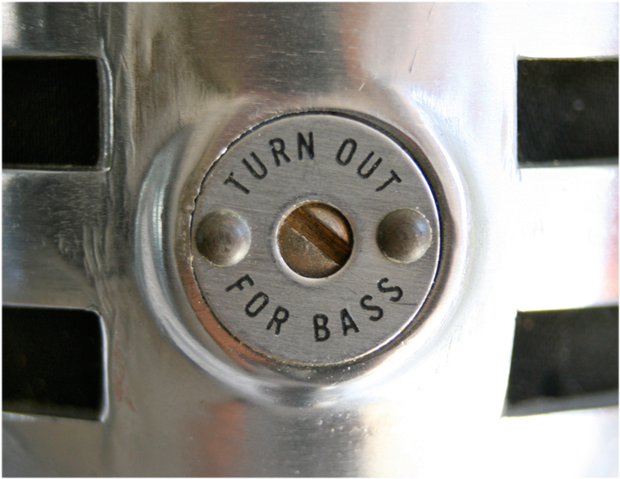|
This month' mic is a cardioid crystal, from 1946; as far as I know there were only two companies that ever produced cardioid crystal microphones: Shure and Electro-Voice. All other crystal microphones ever made, and there were quite a lot, were omnidirectional types.
The name Cardax may come from the CARDioid dirAXtional pick up pattern (EV brought out a Cardyne (CARdioid DYNEmic), at the same time).
The 950 made use of the "Mechanophase principle' (see illustration mid-right): a phase shifting diaphragm that produced a high degree of unidirectivity. For extra versatility the microphone had a dual frequency selector at the rear: a screw control gave choice between a flat or a rising frequency response.
The futuristic shape of the Cardax reminds me of the Guggenheim museum in New York, but perhaps the architect, Frank Lloyd Wright, took his inspiration from this EV Cardax, since the museum was built later, in 1956.
All crystal microphones are based on the patents of the Brush Company, which made use of the piezoelectric properties of Rochelle salt crystals. When these salt crystals are deformed under pressure, they deliver an electric voltage, which can be used to translate sound into an electric signal. Many turntable elements were also based on this technique.
Today crystal microphone cartridges are no longer produced, but between 1930 and 1960 they were hugely popular. They had a high output, reasonable quality and they were cheap. These microphones were facing two threats: humidity and high temperatures (over 50 degrees Celsius), both could render the crystals useless.
Electro-Voice countered these threats by sealing the capsule and by using a cartridge grill cloth made from spun glass, which had an extreme uniformity of thread size and mesh, and was chemically inert and non-hygroscopic.
The Cardax was popular as a PA mic and loved by many Ham radio operators, who used them for many years. In 1966, after 20 years of production, the model was superseded by the EV 951 cardioid crystal microphone.
These and many more types feature in my book Witnesses of Words. More information about that can be found at www.witnessesofwords.com
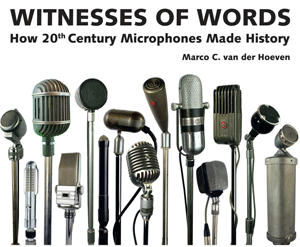
|
|
|
|
|
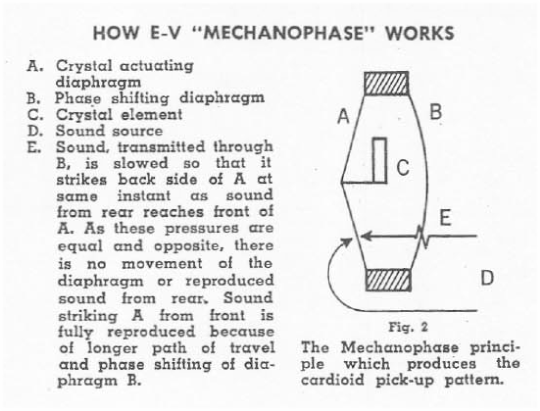
|
Top: the space age design look of the EV Cardax
Middle: the frequency selector and how 'Mechanophase' works
Below: the sound & ads for the EV Cardax
|
|
|
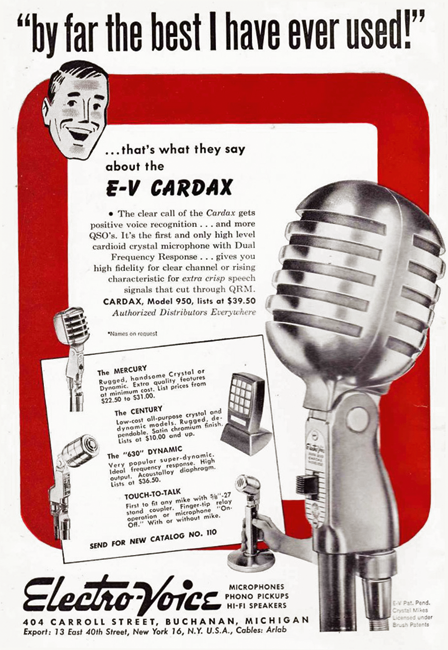 |
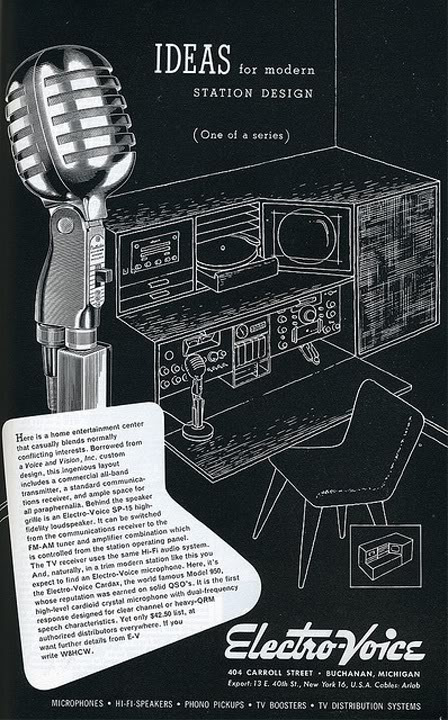 |
|


 Video's
Video's Contact
Contact


